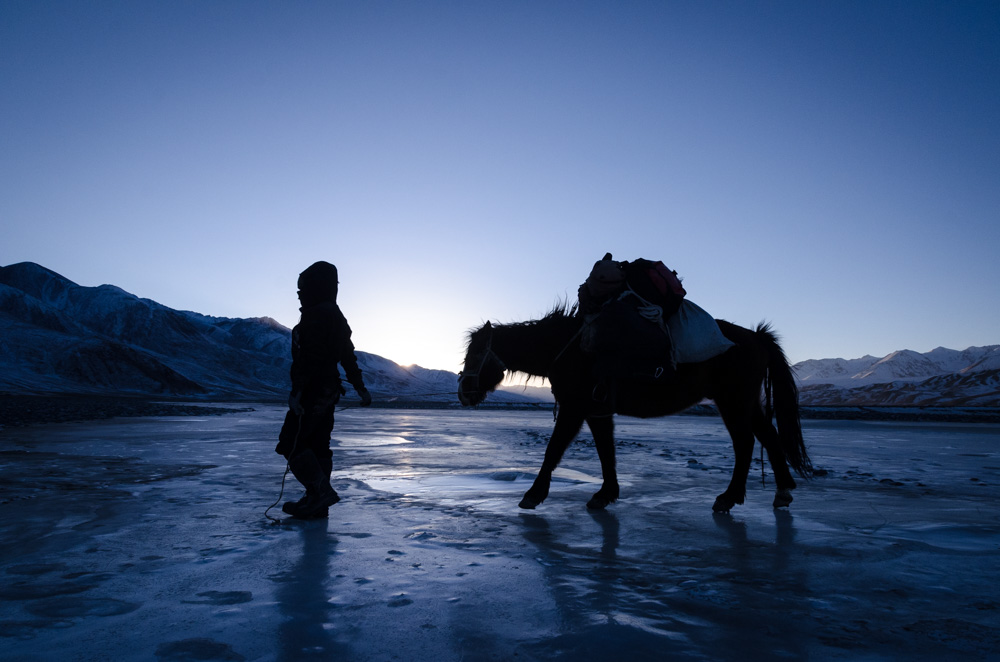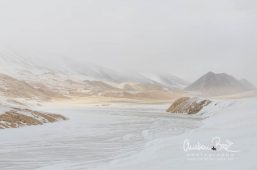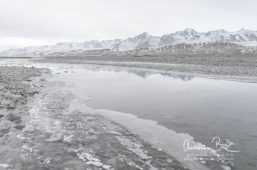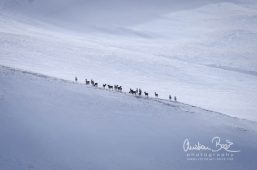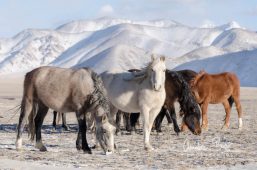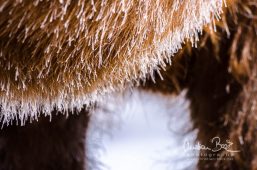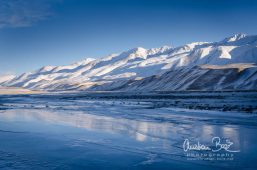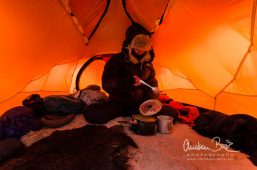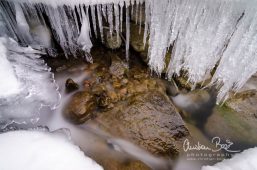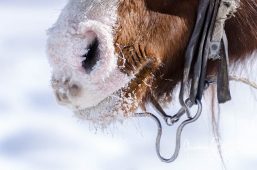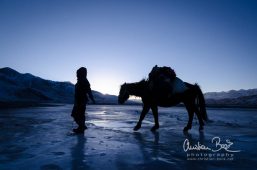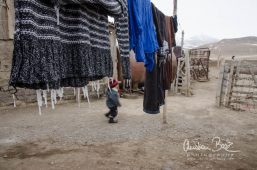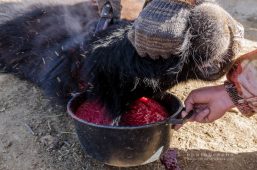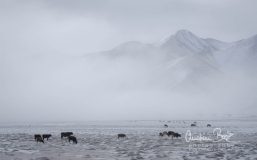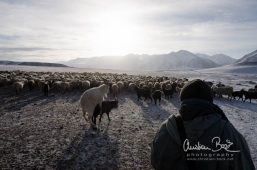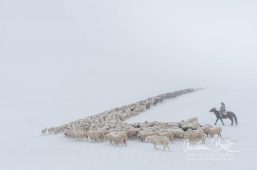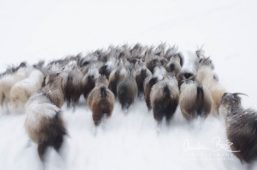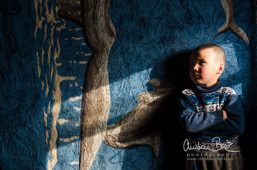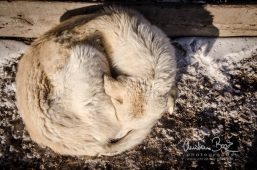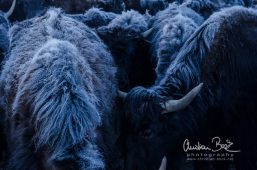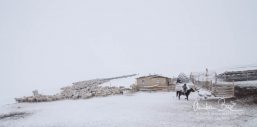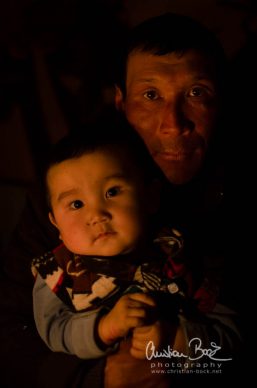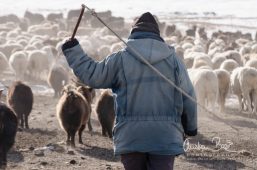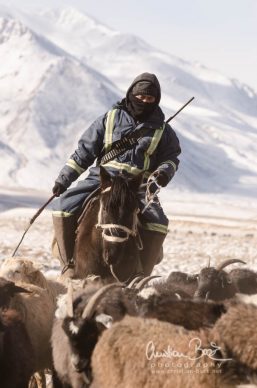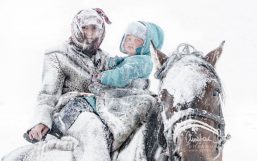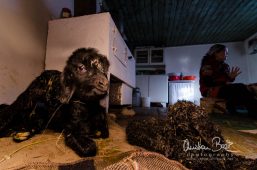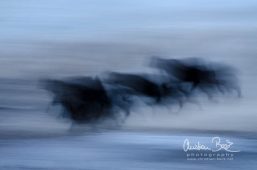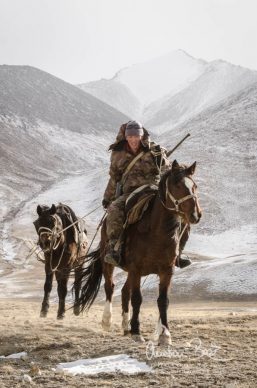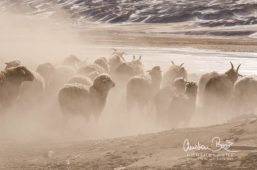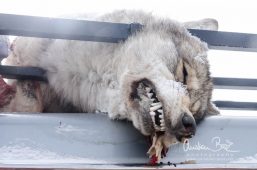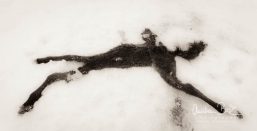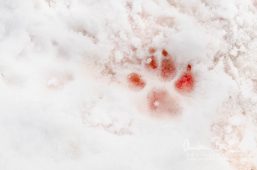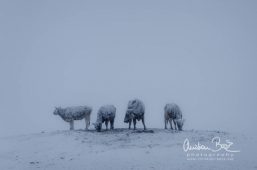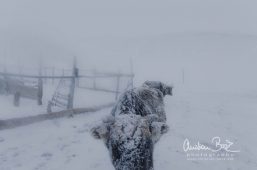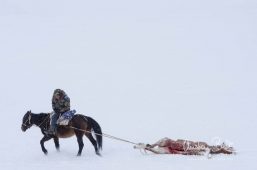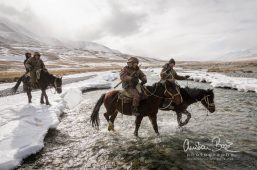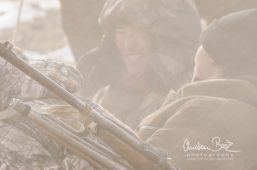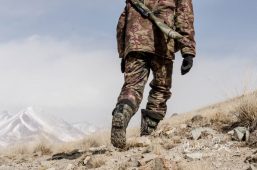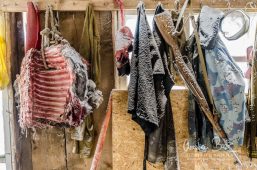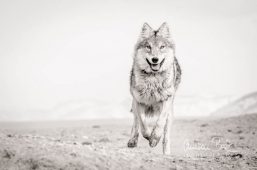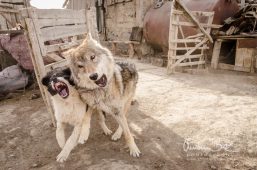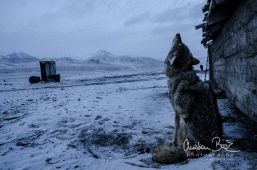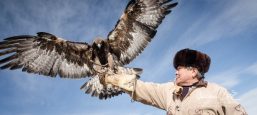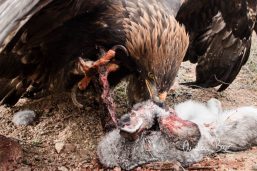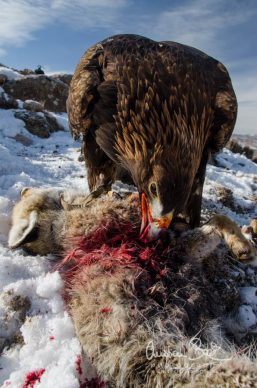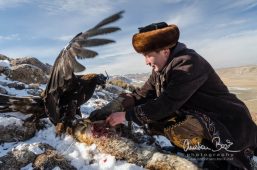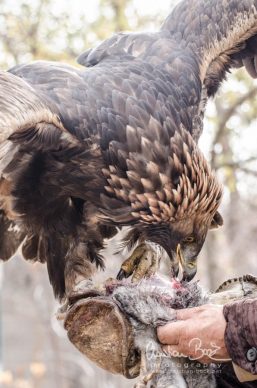Roaming two winters through the Kyrgyz highlands
In summer 2013 I got to know shepherds in the Kyrgyz highlands who stay in the mountains year-round, in contrast to most people who are taking up their animals to the high pastures for the summer months only. In winter 2014, with good connections and some luck my friend Maria and I were able to organize a strong horse and were trekking for two months through the harsh conditions of the highlands. At this time of the year temperatures can drop to -40°C accompanied by strong winds. One year later we repeated our endeavor with Nanda, a befriended photographer from Singapore, joining for one month. An incredible journey, on which we made friends with a lot of great people, living in a difficult environment.
The shepherds who remain over winter in these areas have to deal with temperature extremes below -40°C, occasional high abundance of snow, fierce winds and strong pressure on livestock due to predators, especially wolves. It was an amazing experience to become acquainted with the way the people and their animals up there adjust themselves to stand these conditions.
The every-day confrontation of working and surviving in a comparatively unforgiving harsh world, creates certain humbleness and sobriety. The problems of an average daily life in modern western civilization are marginalized by experiences like this. In fact, some of them get neutralized by becoming even ridiculous. Moreover, you gain the impression that personal happiness is indeed a very relative emotional state and that our brains are able to synthesize positive feelings for whatever situation we find ourselves in.
Wolves
I remember sitting next to the oven with Maria and Kylyz, enjoying some tea. Thick snow-fall and fog was covering the landscape outside. The other shepherd – Satyrbek – had left early this morning, driving out and guarding the sheep on the snowy pastures, while Kylyz stayed home to keep the house. There were only the two of them here. Kylyz’ wife had left to civilization, since their 2-year old son became ill.
Suddenly, the door opened and Satyrbek stumbled in, highly excited. He demanded Kylyz to immediately saddle his horse and to ride over into the eastern hills. From above, he had seen the wolf-pack attacking their herd of horses. Satyrbek himself had to stick with the sheep – a much more vulnerable target. Kylyz jumped into his boots, quickly prepared his horse and swiftly trotted through the deep fresh snow, disappearing in the fog.
About four hours later, Kylyz returned, with the bloody head of a young horse tightened on the back of his saddle. The eyes were missing, the fur still sweaty and warm. He tells us that the rest is gone. One day later we should discover the remnants – the fur of the torso with the dangling hooves stretched out in the snow, like an imploded balloon that was stabbed with a knife. They had eaten everything, with even the bones untraceable.
Later the same day I took pictures of now four horse-heads laying in the shed, all killed within a couple of weeks. One of the skulls was still partly covered with fur and the mane wildly falling behind its neck, as of a living stallion, galloping through the highlands. The other side of the skull though was showing blank bone, with shiny teeth grinning at me and occasional spots of frozen blood and meat. The darkness fell, and we were sitting in the light of petroleum-lamps around the table, eating potatoes and mutton. During the evening, I appreciated the perception of something being out there. Something that forces humans to think of themselves in terms of members of the food-chain. It brought up this feeling of actually being part of an eco-system, although in a dreadful context. I guess that – among many others – the growing absence of this perception in the industrialized world may have contributed to an extent to the ongoing destruction of the planet by the human species, more and more decoupling our emotions from the context of the biological environment.
Eagle Hunting
In autumn 2014 I got to know Ishenbek, who turned out to be the most renowned falconer in the country. A couple of months later my friend Nanda and me were joining him and his scholar Russlan on a winter-hunt in the foothills of the Terskey Ala Too Range, at the southern shores of Issyk-Kul Lake. Falconry has a long tradition in Ishenbeks’ family. He learned the craft 32 years ago from his father, who himself was taught by Ishenbeks’ grandfather.
